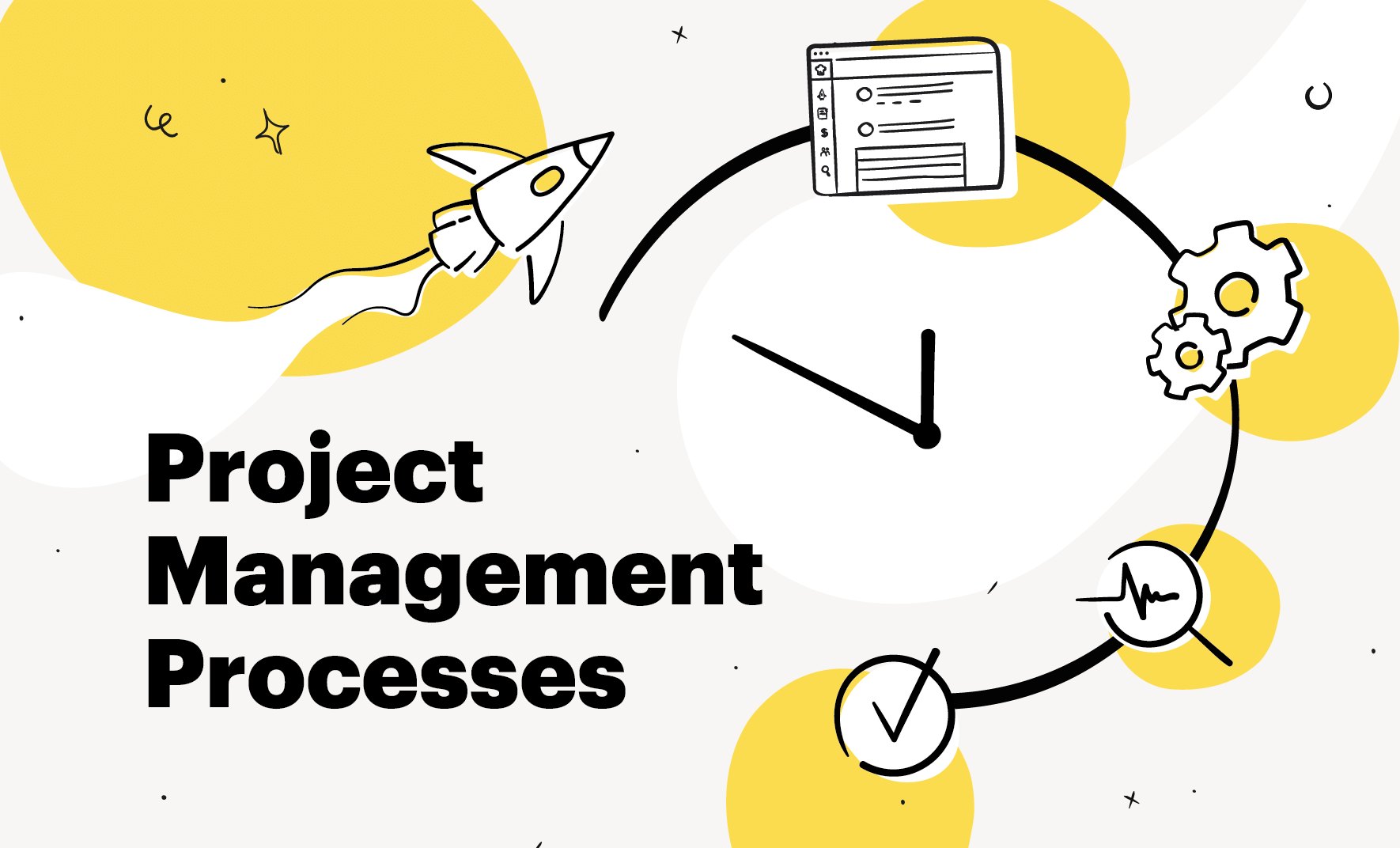Project Management Processes : Quick Comprehensive Guide + Examples

Project management processes are the foundation of any project. They define what to do when and also what you need to do to manage a project. No matter the methodology you use to complete a project – be it waterfall, agile, or else, the project management processes will be the same for any project.
In this short article, we will discuss the basics behind project management processes and set you off on a good start in your project management journey.
What are the Key Project Management Processes (PMBOK)?
Project management processes can have a slightly different naming convention, depending on the industry that you are in. But you always get from the very beginning what they are about.
But let’s see what PMBOK (the bible of project managers) has for definitions for project management processes – all projects, no matter what industry and no matter what Life Cycle they follow, will always have five project management processes – initiation, planning, execution, monitor and control, and closing.
Project Management Processes In Detail
Definition aside, what is the actual idea behind each one of these processes? What you are supposed to “do” and “manage” at each stage? In this section, we will explain in more detail.
1. Initiating
Gathering business requirements and creating a project charter.
At this stage necessary business case to start a project is shaped, then a project sponsor of the project, who will financially support the project will initiate the project start and the project manager will be assigned to manage and coordinate project activities.
This process group will include activities such as:
- Selecting project manager
- Determining the company culture and existing systems
- Collect processes, procedures, and historical info from the company
- If the project is large, divide it into phases
- Understanding the business case (Why is the project done?)
- Collecting customer requirements and creating measurable objectives
- Develop Project Charter (high-level information for the project)
- Identify stakeholders – expectations and requirements must be documented
2. Planning
Defining system requirements and creating a project management plan
At this stage, end-to-end project planning is completed, including cost management, scheduling, quality management, resource management.
The second process group will include activities such as:
- Determine HOW you will do planning
- Finalizing requirements: scope, schedule, cost, etc.
- Creating project scope statement – includes major deliverables
- Determining what needs to be purchased – materials, vehicles leased…
- Choosing a team – how many people you need and what knowledge they should have
- Creating WBS – Work Breakdown Structure
- Completing your activity list – small tasks, that can be assigned to one team member
- Create network diagram – dependencies between tasks in a project
- Estimating resource requirements
- Time and cost estimation
- Determining critical path – defines the total project duration
- Recognize quality standards, procedures, and metrics
- Clear roles and responsibilities need to be decided
- Create risk response strategies
- Gain a formal approval of the plan and hold a kick-off meeting
3. Executing
Creating the actual product.
This is the stage where you deliver the actual project output and you produce project deliverables.
This process group includes activities such as:
- Executing the work, according to the project plan
- Producing the product scope
- Requesting changes – evaluating, managing
- Implementing only approved changes
- Ensuring common understanding
- Performing quality assurance
- Evaluating team and project performance
- Giving recognition and rewards
- Using issue logs
- Dealing with conflicts
- Holding regular meetings
4. Monitoring
Testing, project reporting, dealing with issues.
This stage interacts with all the other stages – because the main purpose is to check whether the project progresses as planned. If there are any deviations, corrective measures can be taken. Also, at this stage reporting problems and issues with the project can help in the next phases of the same project or can help learn for future projects.
At this stage, you involve in activities, such as:
- Measure performance – schedule and cost performance will show you if you are on track
- Requesting changes
- Performing integrated change control – evaluating the changes and their impact on the project
- Approving or rejecting changes
- Informing stakeholders of approved changes
- Creating forecasts – forecasting end date and costs, based on the current stage and performance
- Performing quality control – the product might need budget and cost, but the quality is as much important
- Reporting on project performance
- Documenting risks and risk response strategies must be created
5. Closing
Project delivery and lessons learned.
Here, you finalize project activities, complete the project, and you hold meetings to reflect on the project – take lessons and congratulate the team on the work done.
The activities under this process group can be divided as follows:
- Confirming everything is according to requirements
- Gaining formal acceptance for the project
- Completing a final performance record, archiving records
- Asking for feedback from stakeholders (lessons learned)
- Handing over the completed project/product
Final words
That was our quick guide to project management processes and we hope we were able to introduce you to the basics in no time.
In the meantime, if you’d like more quick reads, check out the related articles: